#elgin pocket watch
Explore tagged Tumblr posts
Photo
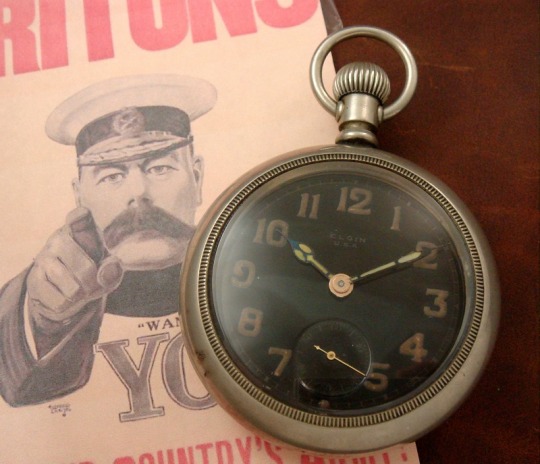

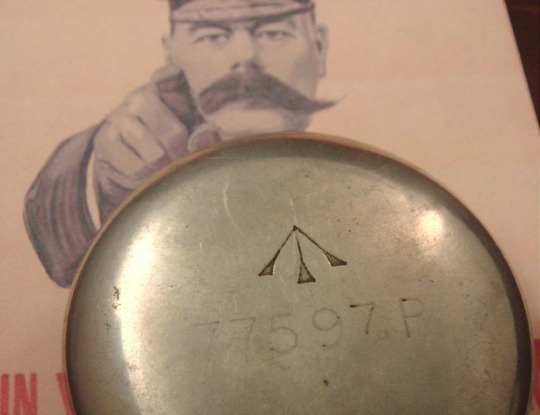

Stunning WWI British military pocket watch manufactured for the war effort by Elgin Watch Company. Features correct "Broad Arrow" military markings on a completely original case. Circa 1918.
#ww1 pocket watch#ww1 watches#ww1 history#ww1 timepiece#broad arrow watch#broad arrow pocket watch#military watch#British military watch#vintage timepiece#pocket watch#classic watches#men's fashion#vintage horology#Strickland Vintage Watches#elgin pocket watch#1900s fashion#1900s watches#men's style#men's watches#british military watches#horology#horological finds
47 notes
·
View notes
Text
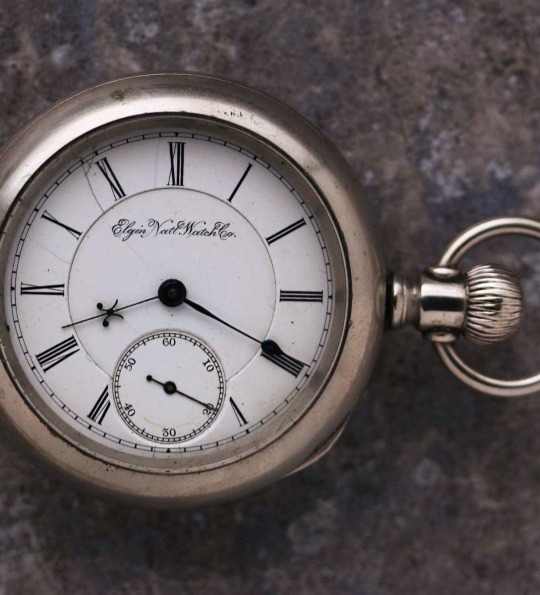
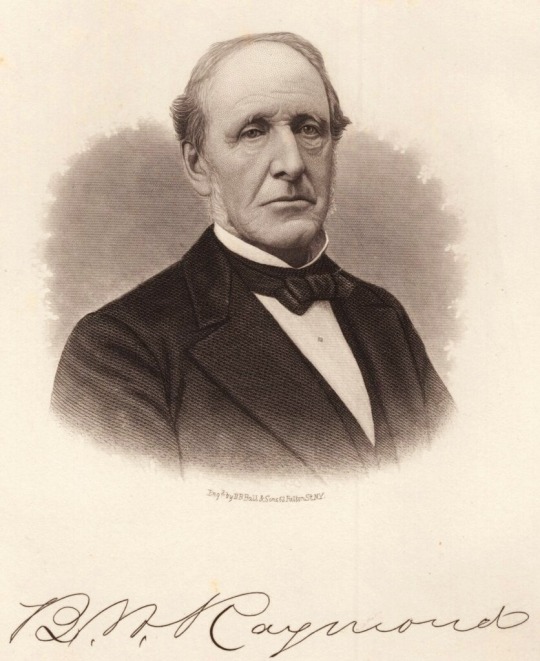



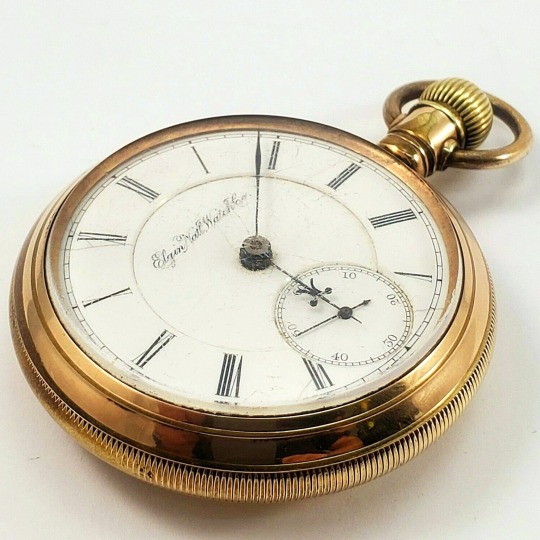
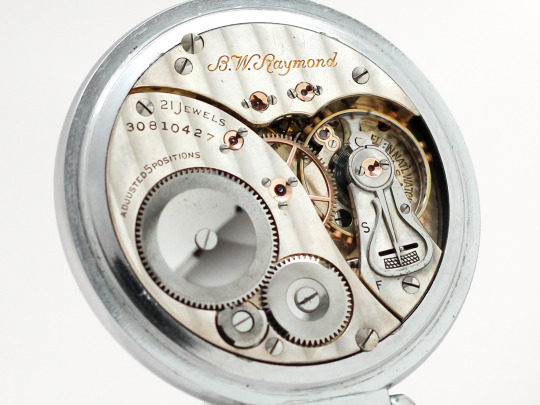
🇺🇲 Step back in time to the fascinating world of horology with the Elgin B.W. Raymond Pocket Watch—a timepiece that embodies precision and craftsmanship!
🌟 The Elgin Watch Company has a storied history dating back to 1864, known for producing high-quality timepieces. The B.W. Raymond model, named after the company's investor and founder, Benjamin Wright Raymond, represents a pinnacle of American watchmaking during the early XXth century.
⏱️ The Elgin B.W. Raymond Pocket Watch was introduced in the late XIXth century and quickly gained acclaim for its accuracy and reliability. These watches were meticulously crafted with intricate movements and adorned with elegant designs, reflecting the craftsmanship of their era.
🕰 Benjamin W. Raymond's tenure as president of Elgin was marked by a commitment to excellence, and the B.W. Raymond Pocket Watch exemplifies this ethos. The watch was produced in various styles, including open-face and hunter-case models, catering to different preferences and needs.
⚙️ The movement of the Elgin B.W. Raymond Pocket Watch was celebrated for its precision. Many of these watches were equipped with high-grade movements, such as the 21-jewel and 23-jewel variants, offering exceptional timekeeping accuracy.
🚂 Beyond its technical prowess, the Elgin B.W. Raymond Pocket Watch holds historical significance. It was a popular choice among railroad workers, as its accuracy and reliability met the stringent requirements for railroad timekeeping.
⏳️ Today, the Elgin B.W. Raymond Pocket Watch remains a sought-after collector's item, cherished for its historical value and exquisite craftsmanship. Its legacy endures as a testament to the ingenuity and artistry of American watchmaking during the golden age of pocket watches.
📜 Whether displayed as a historical artifact or cherished as a functional timepiece, the Elgin B.W. Raymond Pocket Watch continues to captivate enthusiasts with its timeless elegance and enduring quality. Explore the heritage of Elgin and discover the allure of this iconic pocket watch!
#timetrek#brands#clock#watch#watches#time#companies#company#history#pocket watch#luxury watches#railroad#railroad watches#chicago#illinois#elgin#elgin national watch company#movement#watchmaking#benjamin wright raymond#timelesselegance#timepiecehistory#timepiece#made in america#made in usa#open face watch#hunter case watch#timekeeping#horology#collectibles
7 notes
·
View notes
Text



Antique Elgin Pocket Watch, Rolled Gold Plate with Engravings.
Source
0 notes
Text
Bidding on Elegance: Why Elgin Watch is the Ultimate Timeless Treasure
Elgin watches have stood the test of time as an embodiment of precision, style, and heritage. With a storied history dating back to the 19th century, these timepieces continue to captivate collectors and enthusiasts alike. Whether you’re a seasoned collector or a newcomer to the world of horology, exploring an Elgin watch is an opportunity to own a piece of history.

The Legacy of Elgin Watches
The Elgin National Watch Company was founded in 1864 and became known for its commitment to excellence and innovation. So this is how these timepieces have stood the test of time and continue to be remembered:
Heritage and Quality: Each Elgin watch is a true marriage of hand-made excellence and fine detailing, evidencing the artistry of American watchmaking.
The Wide Array: From pocket watches to wristwatches, Elgin offered designs for every taste and occasion.
Innovative Technology: Elgin was at the cutting edge of mechanical thoughts, providing their piece with precision capabilities for railroads and military operations.
Durability: Their high-quality materials ensure that these are both tough and long-lasting.
This vintage choice with classy designs melds nostalgia with the current and modern.

Why Collectors Love Vintage American Timepiece
1. Historical Significance
Elgin watches have played an important part in the history of industrialization and horology in America and thus are always favorites among antique watch collectors.
2. Vast Variety
Elgin watches have designs that range all over the board: from the intricate hand-engraved case to the more simple modified ones; there is certainly something for everyone's taste.
3. Investment Potential
Most vintage Elgin watches really do appreciate in value and are a smart option if one wants to mix their love for watches with investment potential.
4. Rarity
Some Elgin models, especially limited editions or one-of-kind designs, are in high demand during auctions and by enthusiasts.
5. Emotional Connection
Timepieces tend to give people the feeling of owning a whole symbolic enclosure, which is as good as holding history in the palm of your hand or, in essence, having a tangible connection to the bygone eras.

Tips for Buying Antique Elgin Clock at Auctions
Research Models: Familiarize yourself with the different collections of Elgin and their historical importance.
Examine for Authenticity: Check for hallmarks, serial numbers, and movement-the information in case you are looking to authenticate your watch.
Evaluate the Condition: Look for wear, if the movement is working, and if there are any replaced parts on the watch that will change value.
Budget: Establish how much you can spend on the item and stick to it.
Bid Wisely: Watch for tendencies in bidding at auctions to make proper bidding choices.
How to Care for Your Historic Elgin Watch
Regular Servicing: The movement should be regularly serviced by a watchmaker to assure its accuracy.
Proper Storage: Store the watch in a temperate, dry environment to shield it from moisture.
Light Cleaning: Wipe the watch's surface with mild, non-abrasive cloths and avoid any harsh-chemical cleaning solutions.
Avoid Overwinding: For manual-wind models, wind gently to avoid damaging the mechanism.
Conclusion
Elgin watches embody elegance, craftsmanship, and history, making them a prized possession for collectors and enthusiasts alike. Whether you’re drawn to their timeless appeal or historical significance, these timepieces provide unparalleled value and charm. Starting an online auction is an excellent way to commence collecting stunning timepieces that resonate within your personal preferences.
FAQ
Q: Are Elgin watches still being made?
A: No, Elgin stopped producing watches in the 1960s, making vintage pieces highly collectible.
Q: How can I verify the authenticity of an Heritage Elgin Timekeeper?
A: Check for serial numbers, movement details, and hallmarks unique to Elgin.
Q: What makes an antique watch valuable?
A: Their historical significance, craftsmanship, and rarity contribute to their value.
Q: Are Elgin pocket watches still popular?
A: Yes, they remain a favorite among collectors for their intricate designs and functionality.
Q: Can Elgin watches be repaired?
A: Yes, many watchmakers specialize in restoring and repairing vintage Elgin timepieces.
#Elgin Watches#Vintage Watches#Timeless Timepieces#American Watchmaking#Antique Watches#Elgin Watch Collecting#Elgin Pocket Watches#Elgin Wristwatches#Watch Auctions#Investment Watches#Collectible Watches#Watch History#Authenticating Watches#Elgin Watch Care
0 notes
Text
Top Markets and Auctions to Buy Authentic Vintage Elgin Pocket Watches
Why Vintage Watches Are Still Popular TodayVintage timepieces like the Vintage Elgin pocket watch and Gruen precision watch are more than just functional devices; they are prized for their artistry and historical significance. These intricate pieces serve as windows into bygone eras, reflecting the dedication to craftsmanship that characterized the golden age of watchmaking.

Elgin Pocket Watches: Known for their blend of reliability and aesthetic appeal, these watches were a hallmark of American innovation. Their intricate movements and timeless designs continue to make them a symbol of sophistication.
Gruen Precision Watches: Gruen’s reputation for precision engineering and elegant design solidifies its position as a staple in vintage watch collections. Owning a Gruen precision watch is akin to owning a finely crafted artifact of horological history.
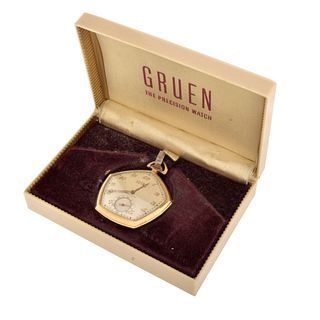
Finding the Right Place to Buy Vintage Watches
Trusted Auction Platforms
Auction platforms provide a secure and curated environment to purchase authentic vintage watches. Some top platforms include:
Bidsquare: Specializes in expertly curated vintage collections, including Elgin and Gruen watches. It offers authenticity checks and detailed listings, making it a go-to for collectors.
Heritage Auctions: Renowned for high-quality vintage timepieces, with thorough appraisals and transparent bidding processes.
eBay: While broad, eBay can be a good source if you stick to verified sellers with strong feedback. Look for listings with clear images and detailed descriptions.
Key Considerations for Online Purchases
To ensure a smooth buying experience:
Inspect Listings Carefully: High-resolution images and detailed descriptions are essential. Pay attention to visible signs of wear, movement type, and engravings.
Verify Authenticity: Seek serial numbers or certificates of origin. Trusted sellers will often provide these details.
Set a Budget: Auctions can be competitive. Decide on a maximum bid to avoid overspending.
Tips for Safeguarding Your Investment
Authenticity and Documentation
Ensure every purchase comes with:
An authentication certificate from a trusted authority.
A detailed appraisal noting the condition, era, and features of the watch.
Specific documentation about the provenance (e.g., serial numbers or maker’s marks).
For Elgin watches, features like original engravings and working mechanics are essential indicators of authenticity. Gruen watches often have unique design elements that distinguish genuine models.
Proper Maintenance for Longevity
Vintage watches are delicate and require attentive care. To protect your investment:
Service Regularly: Engage a professional watchmaker to clean and maintain the watch.
Storage: Keep the watch in a dry, cool space. Consider using a protective case to shield it from dust and scratches.
Avoid Overwinding: Older watches are prone to mechanical strain, so wind with care.
Conclusion
Vintage watches like the Elgin pocket watch and Gruen precision watch are enduring testaments to quality craftsmanship and timeless design. Whether you’re drawn to their historical significance or their aesthetic charm, online auction platforms like Bidsquare offer a trusted pathway to acquiring these treasures. With proper research and care, these timepieces can become lasting investments and cherished heirlooms.
FAQs
What makes Vintage Elgin pocket watches unique?Their innovative mechanics and elegant designs set them apart, reflecting the pinnacle of American watchmaking.
Why is Gruen precision watch in demand?Gruen watches are celebrated for their precision engineering and refined style, making them desirable collectibles.
How do I authenticate a vintage watch?Look for serial numbers, provenance, and buy through platforms that offer professional verification.
Are vintage watches good investments?Yes, particularly if the piece is rare, in excellent condition, and from a reputable brand.
What’s the best way to maintain a vintage watch?Regular servicing and careful storage are key to preserving its functionality and value.
0 notes
Text
Assembly of 1920s Elgin Grade 317 size 18 Movement - 28074941 - Part 2
Continuing where we left off in part 1:


Assembly for the parts of the balance regulator on the top plate.

Pierced jewels added to top plate. For the third wheel, fourth wheel, escape wheel, and escape lever/pallet fork.

Third wheel

Second (center) wheel

Mainspring barrel / main wheel

Fourth wheel

Escape wheel


Escape lever / pallet fork

Top plate attached to rest of the movement assembly. CAREFUL! Escape lever pokes through hole in the part supporting the balance wheel jewels, so it can engage with balance wheel roller.

Escape lever poking through space in top plate to engage with balance wheel. Be CAREFUL here as the lever is small and fragile.

Wheel train between the main plate and top plate.

Mainspring barrel bridge


Balance wheel, hairspring, and roller table.

Balance wheel in place. Make sure the roller in on the correct side to engage with the escapement lever!

Balance wheel bridge. (there is a traditional name, but overzealous filters may mark it as mature)

Balance wheel pierced and cap jewels added to balance wheel bridge.

Balance assembly complete.

Regulator engaging with components on top plate.

Hairspring stud being held by balance wheel bridge.

Cannon pinion added to second (center) wheel pinion, dial side.

Hour wheel, completing the motion works, dial side.

Spring washer, dial side.

Dial reattached. Unfortunately it's suffered a lot of corrosion, and wear, but there isn't much I can do about it beyond some complete re-coating of the plating.
That is where the movement sits right now. The hands are badly corroded and need some attention, and there are some other matters to attend to with this watch. In the future it'll be a complete piece, and I'll make an update when that day comes.
0 notes
Text
@bulova happy holidays 🎄👀☝️
@hamilton @hamiltonwatchofficialpage-blog1 @hamiltonwatch
Hurry some 💲ales end 🏪
⏰😳
@lacma @louvre @covergirl @maybelline @bet @kday @gq @wsj @money @gemstone-network @gemstonesilverjewelryus @gemstones @jewelry @fashion @crystalgems-blog @youtube @google @yahoo @bing @twobigblondes @consignmentcouture @christiesauctions @sothebys-pe-blog @sothebys @qvc @qvcuk @twitter @tv-moments @variety @thr @watchestobuy @watchesparadise @bestbuy @biglots @target @watchrepairlondon @vintage @watchrepair @vintagewatchesdepot @cmt @vintagewatchesandjewellery-blog @gemstone-network @baldassarreted @gemstonesilverjewelryus @gemstones @jewelry @fashion @crystalgems-blog @youtube @google @yahoo @bing @twobigblondes @consignmentcouture @christiesauctions @sothebys-pe-blog @sothebys @qvc @qvcuk @twitter @tv-moments @variety @thr @taylor13 @lizzo
@youtube @yahoo @google @thr @variety @instagram @yellowtaxi @lyft @twitter @tumblr @yahoofinance @money @fortune @forbes @wsj @dalailama @uscopyrightoffice @wholefoods @olaqueenbee @olavay @instagram
@vogue @ebay @thr @variety @nytimes @seattletimes @latimes @time @google @forbes @etsy @tvguide @pbs @nytimes @tissot @raymondweil @luxurywatchguy1 @calibercrown @rolex @nytimes @google @money @bestbuy @walmart @biglots @tiffanyandco @covergirl @essence @bet @mtv @bbc @cnn @espn @nba @wnba @nfl @revlon @goldmansachs @macys @jomashop @watchmaxx @foxnews @cnn @bbc @lacma @louvre @covergirl @maybelline @bet @kday @gq @wsj @money @gemstone-network @gemstonesilverjewelryus @gemstones @jewelry @fashion @crystalgems-blog @youtube @google @yahoo @bing @twobigblondes @consignmentcouture @christiesauctions @sothebys-pe-blog @sothebys @qvc @qvcuk @twitter @tv-moments @variety @thr @watchestobuy @watchesparadise @bestbuy @biglots @target @watchrepairlondon @vintage @watchrepair @vintagewatchesdepot @vintagewatchesandjewellery-blog @gemstone-network @baldassarreted @gemstonesilverjewelryus @gemstones @jewelry @fashion @crystalgems-blog @youtube @google @yahoo @bing @twobigblondes @consignmentcouture @christiesauctions @sothebys-pe-blog @sothebys @qvc @qvcuk @twitter @tv-moments @variety @thr @taylor13 @lizzo
@youtube @yahoo @google @thr @variety @instagram @yellowtaxi @lyft @twitter @tumblr @yahoofinance @money @fortune @forbes @wsj @dalailama @uscopyrightoffice @wholefoods @olaqueenbee @olavay @instagram
@vogue @ebay @thr @variety @nytimes @seattletimes @latimes @time @google @forbes @etsy @tvguide @pbs @nytimes @tissot @raymondweil @luxurywatchguy1 @calibercrown @rolex @nytimes @google @money @bestbuy @walmart @biglots @tiffanyandco @covergirl @essence @bet @mtv @bbc @cnn @espn @nba @wnba @nfl @revlon @goldmansachs @macys @jomashop @watchmaxx @foxnews @cnn @bbc @lacma @louvre @covergirl @maybelline @bet @kday @gq @wsj @money @gemstone-network @gemstonesilverjewelryus @gemstones @jewelry @fashion @crystalgems-blog @youtube @google @yahoo @bing @twobigblondes @consignmentcouture @christiesauctions @sothebys-pe-blog @sothebys @qvc @qvcuk @twitter @tv-moments @variety @thr @watchestobuy @watchesparadise @bestbuy @biglots @target @watchrepairlondon @vintage @watchrepair @vintagewatchesdepot @vintagewatchesandjewellery-blog @gemstone-network @baldassarreted @gemstonesilverjewelryus @gemstones @jewelry @fashion @crystalgems-blog @youtube @google @yahoo @bing @twobigblondes @consignmentcouture @christiesauctions @sothebys-pe-blog @sothebys @qvc @qvcuk @twitter @tv-moments @variety @thr @taylor13 @lizzo
@youtube @yahoo @google @thr @variety @instagram @yellowtaxi @lyft @twitter @tumblr @yahoofinance @money @fortune @forbes @wsj @dalailama @uscopyrightoffice @wholefoods @olaqueenbee @olavay @instagram @lacma @louvre @covergirl @maybelline @bet @kday @gq @wsj @money @gemstone-network @gemstonesilverjewelryus @gemstones @jewelry @fashion @crystalgems-blog @youtube @google @yahoo @bing @twobigblondes @consignmentcouture @christiesauctions @sothebys-pe-blog @sothebys @qvc @qvcuk @twitter @tv-moments @variety @thr @watchestobuy @watchesparadise @bestbuy @biglots @target @watchrepairlondon @vintage @watchrepair @vintagewatchesdepot @vintagewatchesandjewellery-blog @gemstone-network @baldassarreted @gemstonesilverjewelryus @gemstones @jewelry @fashion @crystalgems-blog @youtube @google @yahoo @bing @twobigblondes @consignmentcouture @christiesauctions @sothebys-pe-blog @sothebys @qvc @qvcuk @twitter @tv-moments @variety @thr @taylor13 @lizzo
@youtube @yahoo @google @thr @variety @instagram @yellowtaxi @lyft @twitter @tumblr @yahoofinance @money @fortune @forbes @wsj @dalailama @uscopyrightoffice @wholefoods @olaqueenbee @olavay @instagram
@vogue @ebay @thr @variety @nytimes @seattletimes @latimes @time @google @forbes @etsy @tvguide @pbs @nytimes @tissot @raymondweil @luxurywatchguy1 @calibercrown @rolex @nytimes @google @money @bestbuy @walmart @biglots @tiffanyandco @covergirl @essence @bet @mtv @bbc @cnn @espn @nba @wnba @nfl @revlon @goldmansachs @macys @jomashop @watchmaxx @foxnews @cnn @bbc
@vogue @ebay @thr @variety @nytimes @seattletimes @latimes @time @google @forbes @etsy @tvguide @pbs @nytimes @tissot @raymondweil @luxurywatchguy1 @calibercrown @rolex @nytimes @google @money @bestbuy @walmart @biglots @tiffanyandco @covergirl @essence @bet @mtv @bbc @cnn @espn @nba @wnba @nfl @revlon @goldmansachs @macys @jomashop @watchmaxx @foxnews @cnn @bbc










11 notes
·
View notes
Text
Next on the restoration docket, I think: an antique powder compact made by the Elgin Watch Company. The compact looks like a pocket watch case, and this is no coincidence! In the years after WWI, pocket watches were falling out of fashion in favor of wrist watches, and at the same time, visible makeup was becoming more acceptable and popular for women. Some established pocket watch companies attempted to adapt to the changing times by pivoting some of their production from designing watch cases to designing makeup compacts! The one I have has divided compartments for loose powder and some kind of cream rouge. (Pictures and further description to follow)
7 notes
·
View notes
Text
Old Pocket Watches Auction: A Timeless Affair at Watchmuseum
The allure of old pocket watches is undeniable. These intricate timepieces, once a necessity for gentlemen and ladies alike, now stand as remarkable relics of horological artistry and craftsmanship. The Old Pocket Watches Auction, held at Watchmuseum, is a celebration of this legacy, drawing collectors, enthusiasts, and curious onlookers from around the world. This article delves into the fascinating world of pocket watch auctions, the significance of these events, and the unique appeal of the Watchmuseum as a premier venue for such auctions.
The Allure of Old Pocket Watches
Old pocket watches are more than just timekeepers; they are symbols of an era where precision and artistry intertwined to create objects of beauty and utility. Each pocket watch carries a story, often linked to historical events, famous personalities, or the evolution of watchmaking technology. Their appeal lies not only in their mechanical complexity but also in their aesthetic value. From intricately engraved cases to enamel dials and hand-painted scenes, these watches are miniature works of art.
The Significance of Pocket Watch Auctions
Auctions for old pocket watches play a crucial role in the preservation and appreciation of horological history. They provide a platform for collectors to acquire rare and significant pieces, often leading to the discovery of forgotten treasures. These events also help establish the market value of vintage timepieces, offering insights into trends and preferences within the collector community.
Watchmuseum: A Premier Auction Venue
Watchmuseum, renowned for its extensive collection and expertise in horology, is an ideal venue for the Old Pocket Watches Auction. Located in a historic building that mirrors the grandeur of the timepieces it showcases, Watchmuseum offers a unique ambiance that enhances the auction experience. The museum's dedication to preserving and promoting the art of watchmaking makes it a trusted institution among collectors and historians alike.
Highlights of the Auction
The Old Pocket Watches Auction at Watchmuseum features an impressive array of timepieces, each with its unique story and significance. Here are some highlights:
1. The Breguet No. 160 "Marie-Antoinette"
One of the most famous pocket watches in history, the Breguet No. 160, often referred to as the "Marie-Antoinette," is a masterpiece of horological engineering. Commissioned by an admirer of the French queen, this watch includes every known complication of its time, including a perpetual calendar, minute repeater, and thermometer. The auctioning of such a piece is a rare event, drawing significant attention from collectors worldwide.
2. Patek Philippe Calibre 89
Known as the most complicated mechanical watch ever created, the Patek Philippe Calibre 89 boasts 33 complications and was made to celebrate the company's 150th anniversary. This extraordinary piece is not only a marvel of engineering but also a significant part of watchmaking history, making it a highly sought-after item at the auction.
3. The American Railroad Watch Collection
A collection of pocket watches designed specifically for railroad use, these timepieces are renowned for their accuracy and durability. Featuring brands like Hamilton, Elgin, and Waltham, the collection highlights the crucial role these watches played in ensuring the safety and efficiency of train travel in the late 19th and early 20th centuries.
The Auction Process
The auction process at Watchmuseum is meticulously organized to ensure a seamless experience for bidders and sellers alike. Here’s an overview:
Pre-Auction Preview
Before the auction, a preview event allows potential buyers to examine the watches up close. Experts from Watchmuseum are on hand to provide detailed information about each piece, including its provenance, technical specifications, and historical significance. This preview is essential for bidders to make informed decisions.
Bidding
Bidding at the Old Pocket Watches Auction can be done in person, online, or via telephone. Watchmuseum employs a sophisticated bidding platform that ensures transparency and fairness. Each lot is presented with a starting bid, and participants engage in a competitive yet respectful manner, often driving prices well above initial estimates.
Post-Auction
After the auction, successful bidders go through a straightforward payment and collection process. Watchmuseum offers shipping services for international buyers, ensuring that their precious acquisitions arrive safely. Additionally, all transactions are accompanied by detailed documentation, including certificates of authenticity and condition reports.
The Role of Watchmuseum in Horological Education
Beyond hosting auctions, Watchmuseum is dedicated to educating the public about the art and science of watchmaking. The museum offers a range of programs, including:
Workshops and Seminars
These events cover various aspects of horology, from the basics of watch mechanics to advanced restoration techniques. Led by industry experts, they provide valuable knowledge for both novice enthusiasts and seasoned collectors.
Exhibitions
Regularly curated exhibitions showcase the evolution of timekeeping devices, highlighting significant milestones and innovations. These exhibitions often include rare pieces from private collections, offering a unique glimpse into the history of watchmaking.
Publications
Watchmuseum publishes a series of books and journals that delve into different facets of horology. These publications are a valuable resource for anyone interested in the field, providing in-depth analyses and stunning visuals.
The Impact of the Auction on the Watch Collecting Community
The Old Pocket Watches Auction at Watchmuseum has a profound impact on the watch collecting community. It not only provides an opportunity to acquire rare and valuable pieces but also fosters a sense of camaraderie among collectors. The auction serves as a networking platform where enthusiasts can share their passion, exchange knowledge, and build lasting relationships.
Notable Sales and Their Stories
Over the years, the Old Pocket Watches Auction at Watchmuseum has seen several notable sales, each with its unique story:
The Sale of the "Duke of Wellington" Watch
A pocket watch once owned by the Duke of Wellington, the British military leader who defeated Napoleon at Waterloo, fetched an impressive sum at a past auction. Its historical significance and impeccable craftsmanship made it a highlight of the event, sparking a bidding war among history aficionados and watch collectors.
The Discovery of the "Lost Patek Philippe"
A previously unknown Patek Philippe pocket watch, discovered in an old estate, made headlines when it was brought to auction. Its rarity and pristine condition resulted in a record-breaking sale, underscoring the auction's role in uncovering hidden treasures.
The Future of Pocket Watch Collecting
As technology continues to advance, the appeal of old pocket watches remains strong. These timepieces represent a link to the past, a testament to human ingenuity and artistic expression. The Old Pocket Watches Auction at Watchmuseum plays a vital role in ensuring that this legacy endures, providing a platform for appreciation, education, and preservation.
Conclusion
The Old Pocket Watches Auction at Watchmuseum is more than just an event; it is a celebration of history, craftsmanship, and the enduring appeal of mechanical artistry. For collectors and enthusiasts, it offers a unique opportunity to acquire exceptional timepieces and to connect with a community that shares their passion. For Watchmuseum, it reinforces its status as a premier institution dedicated to the preservation and promotion of horological heritage. As the gavel falls on each lot, it is not just a sale but a continuation of the story of these remarkable objects, ensuring that their legacy is cherished for generations to come.
Website: https://watchmuseum.org
https://seogoogle99.blogspot.com/2024/05/verge-pocket-watches-shop.html
2 notes
·
View notes
Photo

A 1900 Elgin National Watch Company advertisement touting its famed ruby jeweled timepiece.
#elgin pocket watch#elgin pocketwatches#vintage advertising#antique watches#antique pocket watch#elgin watches#elgin national watch company#men's fashion#1900s fashion#old watches#men's watches#men's style#men's timepieces#timepiece#horology#antique horology#horological finds#classic watches#men's vintage fashion
13 notes
·
View notes
Text
Bidding on Elegance: Why Elgin Watch is the Ultimate Timeless Treasure
Elgin watches have stood the test of time as an embodiment of precision, style, and heritage. With a storied history dating back to the 19th century, these timepieces continue to captivate collectors and enthusiasts alike. Whether you’re a seasoned collector or a newcomer to the world of horology, exploring an Elgin watch is an opportunity to own a piece of history.

The Legacy of Elgin Watches
The Elgin National Watch Company was founded in 1864 and became known for its commitment to excellence and innovation. So this is how these timepieces have stood the test of time and continue to be remembered:
Heritage and Quality: Each Elgin watch is a true marriage of hand-made excellence and fine detailing, evidencing the artistry of American watchmaking.
The Wide Array: From pocket watches to wristwatches, Elgin offered designs for every taste and occasion.
Innovative Technology: Elgin was at the cutting edge of mechanical thoughts, providing their piece with precision capabilities for railroads and military operations.
Durability: Their high-quality materials ensure that these are both tough and long-lasting.
This vintage choice with classy designs melds nostalgia with the current and modern.

Why Collectors Love Vintage American Timepiece
1. Historical Significance
Elgin watches have played an important part in the history of industrialization and horology in America and thus are always favorites among antique watch collectors.
2. Vast Variety
Elgin watches have designs that range all over the board: from the intricate hand-engraved case to the more simple modified ones; there is certainly something for everyone's taste.
3. Investment Potential
Most vintage Elgin watches really do appreciate in value and are a smart option if one wants to mix their love for watches with investment potential.
4. Rarity
Some Elgin models, especially limited editions or one-of-kind designs, are in high demand during auctions and by enthusiasts.
5. Emotional Connection
Timepieces tend to give people the feeling of owning a whole symbolic enclosure, which is as good as holding history in the palm of your hand or, in essence, having a tangible connection to the bygone eras.

Tips for Buying Antique Elgin Clock at Auctions
Research Models: Familiarize yourself with the different collections of Elgin and their historical importance.
Examine for Authenticity: Check for hallmarks, serial numbers, and movement-the information in case you are looking to authenticate your watch.
Evaluate the Condition: Look for wear, if the movement is working, and if there are any replaced parts on the watch that will change value.
Budget: Establish how much you can spend on the item and stick to it.
Bid Wisely: Watch for tendencies in bidding at auctions to make proper bidding choices.
How to Care for Your Historic Elgin Watch
Regular Servicing: The movement should be regularly serviced by a watchmaker to assure its accuracy.
Proper Storage: Store the watch in a temperate, dry environment to shield it from moisture.
Light Cleaning: Wipe the watch's surface with mild, non-abrasive cloths and avoid any harsh-chemical cleaning solutions.
Avoid Overwinding: For manual-wind models, wind gently to avoid damaging the mechanism.
Conclusion
Elgin watches embody elegance, craftsmanship, and history, making them a prized possession for collectors and enthusiasts alike. Whether you’re drawn to their timeless appeal or historical significance, these timepieces provide unparalleled value and charm. Starting an online auction is an excellent way to commence collecting stunning timepieces that resonate within your personal preferences.
FAQ
Q: Are Elgin watches still being made?
A: No, Elgin stopped producing watches in the 1960s, making vintage pieces highly collectible.
Q: How can I verify the authenticity of an Heritage Elgin Timekeeper?
A: Check for serial numbers, movement details, and hallmarks unique to Elgin.
Q: What makes an antique watch valuable?
A: Their historical significance, craftsmanship, and rarity contribute to their value.
Q: Are Elgin pocket watches still popular?
A: Yes, they remain a favorite among collectors for their intricate designs and functionality.
Q: Can Elgin watches be repaired?
A: Yes, many watchmakers specialize in restoring and repairing vintage Elgin timepieces.
#Elgin Watches#Vintage Watches#Timeless Timepieces#American Watchmaking#Antique Watches#Elgin Watch Collecting
0 notes
Text
5 Most Valuable Pocket Watch Brands to Collect
For hundreds of years, pocket watches have represented greater than only a way to keep time; they're symbols of craftsmanship, style, and history. In ultra-modern world, these portions are extra than simple timepieces—they're coveted collector's gadgets that tell stories of the beyond. whether you're a seasoned collector or a newcomer interested by vintage pocket watches, this manual will assist you explore the charming international of these timeless relics.
A brief history of Pocket Watches Pocket watches date back to the early 16th century, originating in Europe at some stage in the Renaissance. earlier than the arrival of wristwatches in the twentieth century, pocket watches were the usual personal timekeepers for males and females alike. some of the earliest designs were bulky and worn across the neck, however they developed into the extra recognizable, compact variations seen today.
Why collect Pocket Watches? collectors are attracted to pocket watches for plenty reasons, including:
ancient cost: every piece tells a tale, regularly associated with historic activities or intervals. Craftsmanship: vintage and vintage pocket watches are acknowledged for his or her tricky, handcrafted mechanisms and designs. investment: The rarity of certain fashions can make them valuable collector's gadgets that boom in worth over time. Sentimental fee: Many families skip pocket watches down through generations, making them cherished heirlooms. vintage vs. vintage Pocket Watches even as the terms "vintage" and "vintage" are on occasion used interchangeably, they hold extraordinary meanings within the international of watch collecting:
antique Pocket Watches: generally, a pocket watch is considered "vintage" if it's miles over 100 years antique. these portions frequently feature guide winding mechanisms and are made from precious metals like gold or silver. antique Pocket Watches: typically, "vintage" refers to watches that are among 30 and 100 years vintage. these watches might also nevertheless function as normal timepieces and regularly exhibit mid-century or artwork Deco designs. Key capabilities to look for in collecting motion: The motion refers to the mechanism that powers the watch. There are 3 styles of pocket watch movements: key-wind, stem-wind, and lever-set. every has particular historical significance. fabric: antique and antique pocket watches are often made from precious metals, which includes gold, silver, and platinum. The fabric can significantly influence the price and desirability of a piece. logo: sure brands, such as Patek Philippe, Waltham, Elgin, and Vacheron Constantin, are incredibly favourite by collectors. situation: A pocket watch in extraordinary condition, with all its original parts and functioning mechanics, will usually fetch a better fee than one which has been significantly repaired or modified. in which to shop for antique and antique Pocket Watches you may locate vintage and vintage pocket watches in diverse places, inclusive of:
antique shops: Many antique sellers specialize in timepieces and can offer a curated choice. Auctions: Watch auctions, each online and in-person, are tremendous for locating uncommon portions. online Marketplaces: websites like eBay and Etsy provide a wide variety of options, even though it’s essential to verify the authenticity of sellers. specialized dealers: a few sellers consciousness exclusively on vintage watches and have the information to help you find a great timepiece.
Vintage Pocket Watches
0 notes
Link
Check out this listing I just added to my Poshmark closet: Rare Elgin 4s 14k Tri Tone Gold Subdial Floral Pattern Pocket Watch with Mono.
0 notes
Text
Assembly of 1920s Elgin Grade 317 size 18 Movement - 28074941 - Part 1
This Elgin Grade 317 movement was produced in roughly 1925. The movement was in quite a sorry state of grime and spots of corrosion upon acquisition. It was stripped down to almost every individual part, cleaned with a detergent solution and isopropyl alcohol, then built back up.

The main plate of the movement, upon which everything is built. This is the default side of the plate, facing the rest of the movement. Unless specified, photos are taken from this side. In this photo, the stem position is oriented upwards.

This is the dial side of the main plate, same orientation as the previous photo.

Small leaf spring for the keyless works clutch, dial side.

The various pieces of gearing for the keyless works clutch, dial side.

Top plate for the keyless works clutch (underside of piece, showing the post to engage with one of the gears)

The assembled keyless works clutch, dial side.


The bridge for holding the keyless works winding pinion and the pin that fits inside (which engages with the stem of the case)

Keyless works bridge and winding pinion. WARNING: this piece was put in place upside down at time of taking this photo. The mistake is soon corrected and will be noted in future photos until fixed.

Keyless works combination set/clutch levers and spring.


Shortened lever for manually switching between set and wind positions.

Manual set lever in location, dial side.

Keyless works combination spring/lever piece in place. Winding pinion bridge still upside down.

Clutch in set position, dial side.

Clutch in wind position, dial side

Clickspring

Click

Clickspring and Click in place

Minute wheel (part of motion works), dial side

Bridge over minute wheel, dial side

Dial side assembly so far.

Movement side assembly so far, the keyless works bridge has been corrected.

Winding pinion and pendant-set parts of keyless works, in set position.

Winding pinion and pendant-set parts of keyless works, in wind position.

Ratchet wheel.

Top plate, top side.

Top plate, bottom side (towards the dial)


Pierced and cap jewels for the balance wheel.
This assembly took a lot of photos, so the rest will be continued in a part 2 post:
0 notes
Text
#charity 💎
🤑🥕
Benefit
@seikowatch
🛒
🛍️
💥
@chicos
@lacma @louvre @covergirl @maybelline @bet @kday @gq @wsj @money @gemstone-network @elizabethtaylor @gemstonesilverjewelryus @gemstones @jewelry @fashion @crystalgems-blog @youtube @google @yahoo @bing @twobigblondes @consignmentcouture @christiesauctions @sothebys-pe-blog @sothebys @qvc @qvcuk @twitter @tv-moments @variety @thr @watchestobuy @watchesparadise @bestbuy @biglots @target @watchrepairlondon @vintage @watchrepair @vintagewatchesdepot @vintagewatchesandjewellery-blog @gemstone-network @baldassarreted @gemstonesilverjewelryus @gemstones @jewelry @fashion @crystalgems-blog @youtube @google @yahoo @bing @twobigblondes @consignmentcouture @christiesauctions @sothebys-pe-blog @sothebys @qvc @qvcuk @twitter @tv-moments @variety @thr @taylor13 @lizzo
@youtube @yahoo @google @thr @variety @instagram @yellowtaxi @lyft @twitter @tumblr @yahoofinance @money @fortune @forbes @wsj @dalailama @uscopyrightoffice @wholefoods @olaqueenbee @olavay @instagram @lacma @louvre @covergirl @maybelline @bet @kday @gq @wsj @money @gemstone-network @elizabethtaylor @gemstonesilverjewelryus @gemstones @jewelry @fashion @crystalgems-blog @youtube @google @yahoo @bing @twobigblondes @consignmentcouture @christiesauctions @sothebys-pe-blog @sothebys @qvc @qvcuk @twitter @tv-moments @variety @thr @watchestobuy @watchesparadise @bestbuy @biglots @target @watchrepairlondon @vintage @watchrepair @vintagewatchesdepot @vintagewatchesandjewellery-blog @gemstone-network @baldassarreted @gemstonesilverjewelryus @gemstones @jewelry @fashion @crystalgems-blog @youtube @google @yahoo @bing @twobigblondes @consignmentcouture @christiesauctions @sothebys-pe-blog @sothebys @qvc @qvcuk @twitter @tv-moments @variety @thr @taylor13 @lizzo @lacma @louvre @covergirl @maybelline @bet @kday @gq @wsj @money @gemstone-network @elizabethtaylor @gemstonesilverjewelryus @gemstones @jewelry @fashion @crystalgems-blog @youtube @google @yahoo @bing @twobigblondes @consignmentcouture @christiesauctions @sothebys-pe-blog @sothebys @qvc @qvcuk @twitter @tv-moments @variety @thr @watchestobuy @watchesparadise @bestbuy @biglots @target @watchrepairlondon @vintage @watchrepair @vintagewatchesdepot @vintagewatchesandjewellery-blog @gemstone-network @baldassarreted @gemstonesilverjewelryus @gemstones @jewelry @fashion @crystalgems-blog @youtube @google @yahoo @bing @twobigblondes @consignmentcouture @christiesauctions @sothebys-pe-blog @sothebys @qvc @qvcuk @twitter @tv-moments @variety @thr @taylor13 @lizzo
@youtube @yahoo @google @thr @variety @instagram @yellowtaxi @lyft @twitter @tumblr @yahoofinance @money @fortune @forbes @wsj @dalailama @uscopyrightoffice @wholefoods @olaqueenbee @olavay @instagram
@vogue @ebay @thr @variety @nytimes @seattletimes @latimes @time @google @forbes @etsy @tvguide @pbs @nytimes @tissot @raymondweil @luxurywatchguy1 @calibercrown @rolex @nytimes @google @money @bestbuy @walmart @biglots @tiffanyandco @covergirl @essence @bet @mtv @bbc @cnn @espn @nba @wnba @nfl @revlon @goldmansachs @macys @jomashop @watchmaxx @foxnews @cnn @bbc
@youtube @yahoo @google @thr @variety @instagram @yellowtaxi @lyft @twitter @tumblr @yahoofinance @money @fortune @forbes @wsj @dalailama @uscopyrightoffice @wholefoods @olaqueenbee @olavay @instagram
@vogue @ebay @thr @variety @nytimes @seattletimes @latimes @time @google @forbes @etsy @tvguide @pbs @nytimes @tissot @raymondweil @luxurywatchguy1 @calibercrown @rolex @nytimes @google @money @bestbuy @walmart @biglots @tiffanyandco @covergirl @essence @bet @mtv @bbc @cnn @espn @nba @wnba @nfl @revlon @goldmansachs @macys @jomashop @watchmaxx @foxnews @cnn @bbc @lacma @louvre @covergirl @maybelline @bet @kday @gq @wsj @money @gemstone-network @elizabethtaylor @gemstonesilverjewelryus @gemstones @jewelry @fashion @crystalgems-blog @youtube @google @yahoo @bing @twobigblondes @consignmentcouture @christiesauctions @sothebys-pe-blog @sothebys @qvc @qvcuk @twitter @tv-moments @variety @thr @watchestobuy @watchesparadise @bestbuy @biglots @target @watchrepairlondon @vintage @watchrepair @vintagewatchesdepot @vintagewatchesandjewellery-blog @gemstone-network @baldassarreted @gemstonesilverjewelryus @gemstones @jewelry @fashion @crystalgems-blog @youtube @google @yahoo @bing @twobigblondes @consignmentcouture @christiesauctions @sothebys-pe-blog @sothebys @qvc @qvcuk @twitter @tv-moments @variety @thr @taylor13 @lizzo
@youtube @yahoo @google @thr @variety @instagram @yellowtaxi @lyft @twitter @tumblr @yahoofinance @money @fortune @forbes @wsj @dalailama @uscopyrightoffice @wholefoods @olaqueenbee @olavay @instagram
@vogue @ebay @thr @variety @nytimes @seattletimes @latimes @time @google @forbes @etsy @tvguide @pbs @nytimes @tissot @raymondweil @luxurywatchguy1 @calibercrown @rolex @nytimes @google @money @bestbuy @walmart @biglots @tiffanyandco @covergirl @essence @bet @mtv @bbc @cnn @espn @nba @wnba @nfl @revlon @goldmansachs @macys @jomashop @watchmaxx @foxnews @cnn @bbc @lacma @louvre @covergirl @maybelline @bet @kday @gq @wsj @money @gemstone-network @elizabethtaylor @gemstonesilverjewelryus @gemstones @jewelry @fashion @crystalgems-blog @youtube @google @yahoo @bing @twobigblondes @consignmentcouture @christiesauctions @sothebys-pe-blog @sothebys @qvc @qvcuk @twitter @tv-moments @variety @thr @watchestobuy @watchesparadise @bestbuy @biglots @target @watchrepairlondon @vintage @watchrepair @vintagewatchesdepot @vintagewatchesandjewellery-blog @gemstone-network @baldassarreted @gemstonesilverjewelryus @gemstones @jewelry @fashion @crystalgems-blog @youtube @google @yahoo @bing @twobigblondes @consignmentcouture @christiesauctions @sothebys-pe-blog @sothebys @qvc @qvcuk @twitter @tv-moments @variety @thr @taylor13 @lizzo
@youtube @yahoo @google @thr @variety @instagram @yellowtaxi @lyft @twitter @tumblr @yahoofinance @money @fortune @forbes @wsj @dalailama @uscopyrightoffice @wholefoods @olaqueenbee @olavay @instagram
@vogue @ebay @thr @variety @nytimes @seattletimes @latimes @time @google @forbes @etsy @tvguide @pbs @nytimes @tissot @raymondweil @luxurywatchguy1 @calibercrown @rolex @nytimes @google @money @bestbuy @walmart @biglots @tiffanyandco @covergirl @essence @bet @mtv @bbc @cnn @espn @nba @wnba @nfl @revlon @goldmansachs @macys @jomashop @watchmaxx @foxnews @cnn @bbc
@vogue @ebay @thr @variety @nytimes @seattletimes @latimes @time @google @forbes @etsy @tvguide @pbs @nytimes @tissot @raymondweil @luxurywatchguy1 @calibercrown @rolex @nytimes @google @money @bestbuy @walmart @biglots @tiffanyandco @covergirl @essence @bet @mtv @bbc @cnn @espn @nba @wnba @nfl @revlon @goldmansachs @macys @jomashop @watchmaxx @foxnews @cnn @bbc










5 notes
·
View notes
